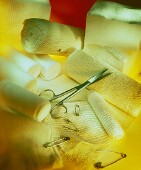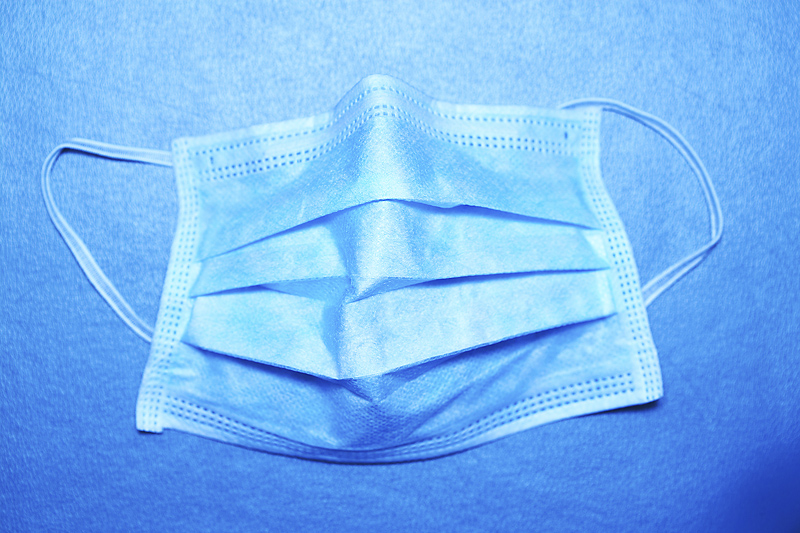
WEDNESDAY, Jan. 6 (HealthDay News) — Two separate research teams report that surgery-related infections can be prevented using two different methods, one aimed at antibiotic-resistant Staphylococcus aureus growing in the nose, the other at microbes living on the skin.
While the skin-based approach was more efficient, and required fewer resources and less testing, both methods can be used together in some high-risk cases, said Dr. Rabih O. Darouiche, lead author of one of two reports in the Jan. 7 issue of the New England Journal of Medicine.
Infections are a common complication after surgery, with the incidence running as high as 5 percent for people undergoing very invasive procedures such as colon surgery or hip replacements. Attention has often been focused on those caused by drug-resistant S. aureus bacteria that can spread from their nasal base.
A trial aimed specifically at nasal staph halved the risk of such infections, physicians from Erasmus University Medical Center in Rotterdam, the Netherlands, report. Their trial started when 6,771 people admitted for surgery were screened for nasal staph; 1,251 were found to carry the germ.
Of these, 917 were put in a controlled trial, with half receiving no treatment aimed at staph and half getting two antibiotic treatments, mupirocin nasal ointment and chlorhexidine soap. Only 3.4 percent of those receiving treatment developed infections, compared to 7.7 percent of those left untreated. The incidence of infections in people undergoing deep-incision surgery was reduced by nearly 80 percent, the Dutch researchers found.
The approach used in the other program was much simpler, said Darouiche, a professor of medicine at Veterans Affairs Medical Center in Houston and director of the Center for Prostheses Infection at Baylor College of Medicine. Of the 849 study participants admitted for surgery in six hospitals, 409 had their skin prepared with chlorhexidine and alcohol, and 440 had their skin prepared with povidone and iodine.
The incidence of infections in those undergoing deep-incision surgery was 3 percent in the povidone-iodine group and 1 percent in the chlorhexidine-alcohol group. The incidence of infections for those having less-deep incisions was 4.2 percent in the chlorhexidine-alcohol group, and 8.6 percent in the povidone-iodine group, the study authors reported.
There are obvious advantages to the skin-cleansing method used in the Houston study, Darouiche said. “One has to do with practicality,” he said. “Chlorhexidine-alcohol can be applied to all patients embarking on surgery as long as they are not allergic to either.” Such allergies are uncommon, he noted.
And only 17 people must be given the skin wash to prevent one infection, while for the method used in the Dutch study, “you have to screen 250 patients to identify 23 carriers in order to prevent infection in a single patient,” he said.
In addition, the specialized equipment required to identify nasal staph infections is not available in many hospitals, Darouiche noted.
The method used by Darouiche and colleagues is “much more effective, very simple and very inexpensive” compared to that reported by the Dutch group, said Dr. Richard P. Wenzel, a specialist in infectious diseases, who is professor of internal medicine at Virginia Commonwealth University and who wrote an accompanying editorial.
But while no official records are kept, it appears that the povidone-iodine technique is used in most U.S. hospitals, he noted.
“It is used in about 75 percent of all clinical procedures done in the United States,” Darouiche said. “About 10 percent of these surgical procedures use chlorhexidine-alcohol.”
Publication of the new report could well change those numbers, Wenzel noted. “The weight of evidence says that chlorhexidine-alcohol should replace povidone-iodine,” he said.
And there is no barrier to both methods being used in people at high risk of infection after surgery, such as those with compromised immune systems, both Wenzel and Darouiche explained.
“These two approaches can be complementary,” Darouiche said. “If you apply the scrub, you reduce infections by 40 percent. If you complement that with the staphylococcus approach in certain populations, you get another 7.5 percent reduction. So you reduce the overall rate of infection in those populations by nearly half.”
The U.S. Centers for Disease Control and Prevention estimates that 290,000 infections occur among the 27 million surgical procedures performed in the U.S. each year.
More information
Detailed information on surgery-related infections is provided by the U.S. Centers for Disease Control and Prevention.

